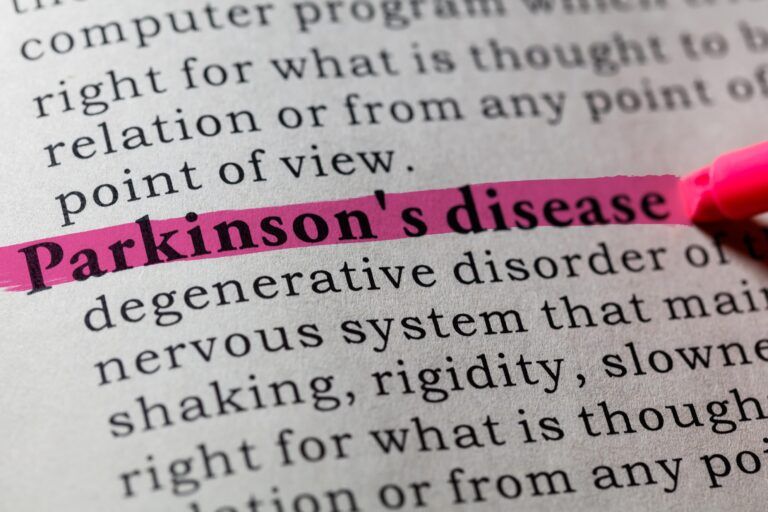Parkinson’s disease (PD) is a progressive neurological disorder that affects movement, causing symptoms like tremors, stiffness, and balance problems. As one of the most common neurodegenerative diseases, it primarily affects older adults, but it can occur in younger individuals as well. Recognizing the early signs of Parkinson’s is crucial for managing its progression and improving the quality of life for those affected. This blog post aims to shed light on these early indicators, providing valuable information for patients, caregivers, and anyone interested in understanding this condition better. By exploring the early symptoms, risk factors, and the diagnostic process, we aim to highlight the importance of early detection and intervention in the management of Parkinson’s disease.
In This Blog:
- Understanding Parkinson’s Disease
- Early Signs of Parkinson’s Disease
- Risk Factors and Early Indicators
Understanding Parkinson’s Disease
Parkinson’s disease (PD) is a chronic and progressive neurological disorder that primarily affects the motor system, leading to a wide range of symptoms that can significantly impact daily life. The disease is characterized by the degeneration of nerve cells in the part of the brain called the substantia nigra. These neurons are responsible for producing dopamine, a neurotransmitter that plays a key role in regulating movement and coordination. As these cells die, dopamine levels decrease, leading to the movement difficulties that are hallmark symptoms of PD.
The onset of Parkinson’s disease is typically gradual, and the progression can vary significantly among individuals. It is most commonly diagnosed in people over the age of 60, but younger onset is also possible, known as early-onset Parkinson’s disease. The exact cause of PD remains unclear, but it is believed to be a combination of genetic and environmental factors. Family history of the disease can increase one’s risk, as can exposure to certain toxins or environmental factors.
Statistically, Parkinson’s disease affects more than 10 million people worldwide, making it the second most common neurodegenerative disorder after Alzheimer’s disease. Men are slightly more likely to develop PD than women. The prevalence of the disease increases with age, but approximately 4% of people with Parkinson’s are diagnosed before the age of 50.
Understanding Parkinson’s disease is crucial not only for those diagnosed with the condition but also for their families, caregivers, and the medical community. Increased awareness and knowledge can lead to earlier diagnosis, improved treatment, and better overall management of the disease. As research continues, there is hope for new discoveries that could lead to more effective treatments and ultimately, a cure for Parkinson’s disease.
Early Signs of Parkinson’s Disease
Recognizing the early signs of Parkinson’s disease (PD) is vital for timely diagnosis and management. The symptoms of PD are diverse and can affect both motor and non-motor functions. Here are some of the early indicators:
Tremors:
One of the most recognizable early signs of Parkinson’s is a slight tremor in the hand or fingers while at rest, often described as a pill-rolling tremor because the finger and thumb move in a circular motion. Tremors may also occur in the lips, chin, or legs.
Bradykinesia (Slowness of Movement):
Individuals may experience a noticeable slowing down in physical movements. Tasks that were once automatic and quick, like buttoning clothes or walking, become more time-consuming and difficult. This slowness is a core feature of PD and is often one of the most disabling symptoms.
Rigidity:
Muscle stiffness or rigidity can occur in any part of the body. This stiffness can limit the range of motion and cause pain. The rigidity can be so severe that it affects facial expressions, leading to a mask-like appearance.
Postural Instability:
Problems with balance and coordination are common in Parkinson’s, leading to a stooped posture and a higher risk of falls. This symptom usually appears in the later stages but can occur earlier in some cases.
Non-Motor Symptoms:

Early signs of PD aren’t limited to movement issues. Non-motor symptoms can precede the more recognizable motor symptoms by several years. These include:
- Sleep disturbances, such as insomnia or excessive daytime sleepiness
- Loss of sense of smell (anosmia)
- Mood disorders, including depression and anxiety
- Constipation, which can be one of the very early signs
- Cognitive changes, such as difficulties with memory or executive function
These early signs can be subtle and often overlooked, as they may be attributed to normal aging or other health conditions. However, when these symptoms persist or interfere with daily activities, it’s crucial to seek medical evaluation. Early diagnosis and treatment of Parkinson’s disease can significantly improve the quality of life for those affected.
Risk Factors and Early Indicators of Parkinson’s Disease
Understanding the risk factors and early indicators of Parkinson’s disease (PD) can aid in recognizing the condition in its nascent stages, potentially leading to earlier diagnosis and intervention. Here’s an overview of the factors that may increase the likelihood of developing PD and the early indicators that may precede the more commonly recognized symptoms:
Risk Factors

- Age: The risk of developing Parkinson’s increases with age. Most people are diagnosed after the age of 60, though early-onset cases can occur before the age of 50.
- Genetics: Having a close relative with Parkinson’s disease can increase the risk, although the hereditary aspect of PD is complex and not fully understood. Certain genetic mutations have been identified that contribute to the risk.
- Sex: Men are more likely to develop Parkinson’s disease than women, though the reasons for this disparity are not clear.
- Exposure to Toxins: Long-term exposure to certain environmental toxins, such as pesticides and herbicides, has been linked to an increased risk of developing PD.
- Head Trauma: There is some evidence to suggest that people who have experienced severe head injuries may have a higher risk of developing Parkinson’s disease later in life.
Early Indicators
Before the more obvious motor symptoms like tremor and bradykinesia appear, there are several early indicators that may hint at the onset of PD:
- Olfactory Dysfunction: A reduced sense of smell is one of the earliest signs of Parkinson’s and can occur several years before motor symptoms develop.
- Sleep Disorders: Issues such as restless legs syndrome, sleep apnea, or REM sleep behavior disorder, where individuals act out dreams, can be early indicators of PD.
- Mood Changes: Depression or anxiety can precede the diagnosis of Parkinson’s disease by several years.
- Autonomic Dysfunction: Symptoms like constipation, urinary urgency, or orthostatic hypotension (a sudden drop in blood pressure when standing up) can be early signs of PD.
- Subtle Motor Symptoms: Slight changes in handwriting (micrographia), where letters become smaller and more cramped, or a reduced arm swing while walking can be early motor signs of PD.
Identifying these risk factors and early indicators is crucial for the timely diagnosis and management of Parkinson’s disease. While the presence of one or more of these factors does not guarantee that a person will develop PD, they can serve as a prompt for closer monitoring and medical evaluation. Early diagnosis allows for the initiation of treatment and management strategies that can significantly improve the quality of life for those with Parkinson’s.
Conclusion
In conclusion, Parkinson’s disease is a complex neurodegenerative disorder with a multifaceted array of symptoms and indicators. Early recognition of these signs, coupled with an understanding of the risk factors, is paramount in the timely diagnosis and management of the disease. By staying vigilant for the early indicators, such as tremors, bradykinesia, rigidity, and non-motor symptoms like changes in smell and sleep patterns, individuals can seek medical advice promptly. Early intervention can lead to more effective management of symptoms, improved quality of life, and potentially slower progression of the disease. As research continues to advance our understanding of Parkinson’s disease, the hope for better treatments and ultimately a cure remains steadfast. It is through increased awareness and education that we can empower individuals and their families to navigate the challenges of Parkinson’s with knowledge and support.

Dr. Kashouty, a diplomate of the American Board of Psychiatry and Neurology (ABPN), practices general neurology with fellowship trained specialization in clinical neurophysiology. Dr. Kashouty finds the form and function of the nerves and muscles the most interesting part of neurology, which is what led him to specialize in neurophysiology with more emphasis on neuromuscular conditions. He treats all neurological diseases, but his main focus is to treat and manage headaches, movement disorders and neuromuscular diseases.




